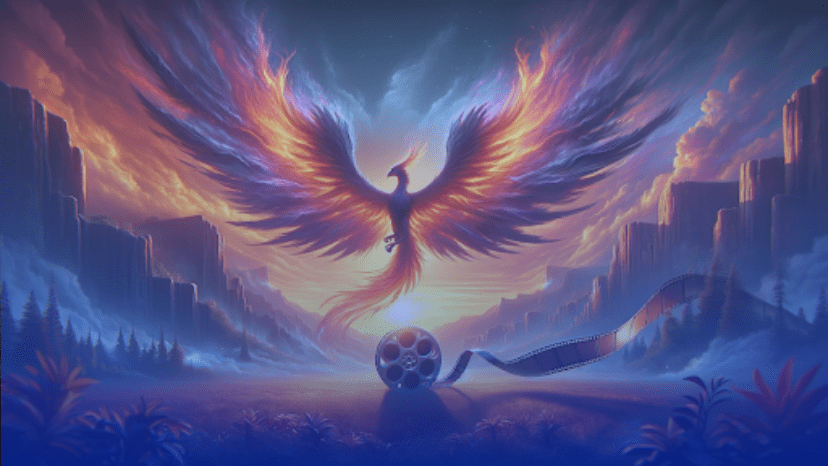A Time of Transformation: Strikes and Their Impact on the Film Industry
The past year has been a landmark period for the film and television industry, marked by significant challenges and transformative changes. The industry witnessed an unprecedented shutdown due to the combined forces of the writers’ and actors’ strikes. These strikes, driven by demands for fair compensation and better working conditions, particularly in the burgeoning streaming sector, caused a ripple effect across the industry. The economic impact of these strikes has been substantial. With production halted for over six months, the industry faced billions in revenue losses. This downtime not only affected major studios and streaming giants but also had a profound impact on the myriad of small businesses and freelancers who form the backbone of this sector. Job losses were widespread, from crew members to post-production teams, reflecting the interdependent nature of our industry. Despite these challenges, the industry has shown remarkable resilience. The Writers Guild of America (WGA) and Screen Actors Guild (SAG) have successfully negotiated new agreements with the studios. These landmark deals include significant gains such as increased minimum wages, a new residual structure for streaming content, and, notably, extensive protections in the rapidly evolving realm of AI technology. These agreements mark a positive step towards a fairer and more sustainable industry for all involved.
Innovation Amidst Adversity: The Shift in Virtual Production
The strikes in the virtual production market, particularly impacting film and television, inadvertently led to a significant shift in the industry’s focus and business models. While traditional media production faced halts and delays, there was a notable pivot towards other forms of digital content creation, such as music videos, game shows, YouTube content, and other online media formats. This shift was not just a stopgap measure but also a strategic move to explore and innovate in spaces less affected by the strikes.
Innovation in Business Models
- Diversification into Digital Media:
Production companies and studios began investing more in digital-first content, recognizing the growing influence of platforms like YouTube and Twitch. This diversification allowed them to tap into new audiences and revenue streams. - Collaborations with Online Creator:
There was an increased collaboration between traditional production houses and online content creators. These collaborations brought together the expertise of seasoned production professionals with the fresh perspectives and audience understanding of digital natives. - Virtual and Augmented Reality Experiences:
The halt in traditional production accelerated the exploration of VR and AR for creating immersive experiences. This was particularly evident in the gaming industry and in interactive music videos, which offered novel ways of audience engagement. - Remote Production Capabilities:
The necessity to work around the strikes led to a rapid adoption of remote and cloud-based production tools. This not only allowed work to continue despite physical restrictions but also opened up global collaboration opportunities.
Impact of Market Halt on Film and Television
- Layoffs and Restructuring:
The prolonged halt in film and television production led to layoffs and restructuring within many companies. This was a direct consequence of reduced revenue streams and the need to adapt to a rapidly changing market landscape. - Shift in Investment Priorities:
Investors and studios began redirecting funds towards more resilient and adaptable business models, often favoring digital and online content over traditional media formats. - Long-term Strategic Changes:
The industry started re-evaluating its reliance on traditional production methods. This introspection is leading to more sustainable, flexible, and innovative approaches to content creation and distribution. The strikes, while initially disruptive, ultimately served as a catalyst for innovation and diversification in the entertainment industry. The forced pause in film and television production prompted a rethinking of traditional business models, leading to an embrace of digital platforms and technologies. This shift not only helped mitigate the immediate impacts of the strikes but also set the stage for a more dynamic and resilient future for content creation and distribution.
The Future Ahead
The resolution of the strikes and the reopening of the industry mark the beginning of an exciting chapter. As independent software vendors, we are committed to being at the forefront of this transformation, providing tools, technology, and education that align with the industry’s renewed focus on fairness, innovation, and creativity. Together, we can help shape a film and television industry that is not only more equitable but also more dynamic and thriving than ever before.
At Mod Tech Labs we have been actively working at the intersection of technology and industry for over a decade. Our unique vantage point has helped us build tools that empower creatives and reduce friction in production workflows making it faster and easier to deliver high quality visual content that will perform on every screen, every time.
Check out some of our previous work in Best Practices and Standards for AI:
Guidelines for Developing Trustworthy Artificial Intelligence Systems





